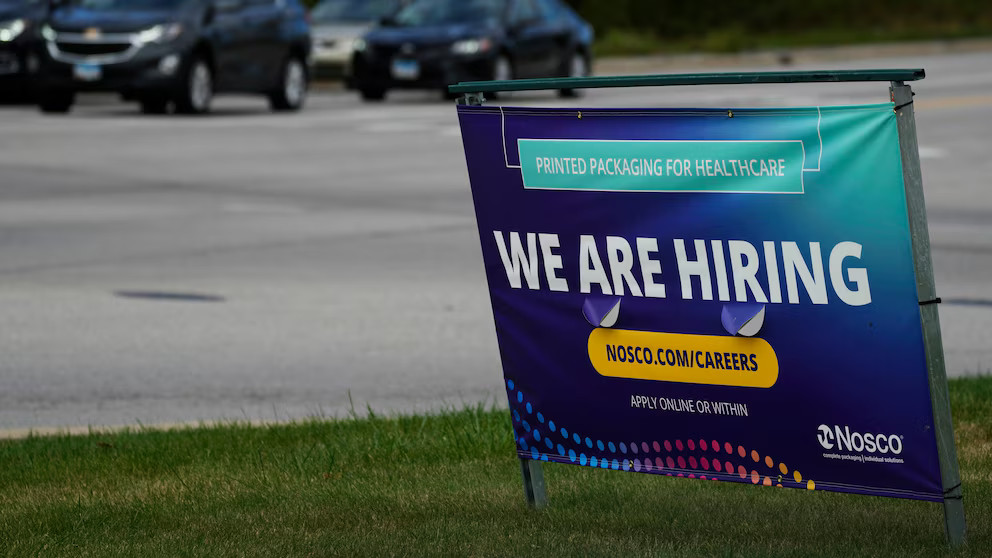- Andy Palmer, the “godfather of EVs,” explains how China took the lead in the electric-car race.
- Palmer got the moniker after developing the Nissan Leaf, the world’s first mass-market EV.
- He said Chinese EVs offered “remarkable” value for money and better battery tech than Western rivals.
The man often known as the “godfather of EVs” has a warning for automakers thinking of ditching electric vehicles for hybrids.
Andy Palmer, a former Aston Martin CEO and Nissan exec, told Business Insider that delaying transitioning to EVs in favor of selling hybrids was a “fool’s errand” and warned that automakers doing so risked falling even further behind Chinese EV companies.
Palmer’s moniker comes from his time as chief operating officer at Nissan.
He led the development of the Nissan Leaf, the world’s first mass-market electric car, which has sold more than half a million units since it launched in 2010.
I wish I could say that it was driven by a motivation to better the world. But actually, it was driven by the Toyota Prius kicking our ass,” Palmer told BI.
Rather than copying the success of the hybrid Prius, Palmer said, he pushed Nissan to build a fully electric vehicle, eventually securing the support of the CEO at the time, Carlos Ghosn.
Over a decade later, he’s skeptical of automakers — including Aston Martin, the company Palmer ran as CEO from 2014 to 2020 — who have taken the opposite path and turned to hybrids as EV adoption has slowed.
“Hybrids are a road to hell. They are a transition strategy, and the longer you stay on that transition, the less quickly you ramp up into the new world,” Palmer said.
If you just delay transitioning to EVs by diluting it with hybrids then you are more uncompetitive for longer, and you allow the Chinese to continue to develop their market and their leadership. I honestly think it’s a fool’s errand,” he added.
China races ahead
Over the past few years, the auto industry has been shaken by the booming growth of Chinese brands such as BYD, which have conquered their home market with a range of affordable and high-tech EVs and hybrids and are now rapidly expanding abroad.
“The Chinese cars are bloody good. The Chinese vehicles offer remarkable value for money for what they deliver,” Palmer said.
Their battery technology’s class-leading, and they’ve concentrated very much on their software,” he said.
Palmer told BI that the success of China’s EV industry was down to the country’s long-running industrial strategy.
One study found that the Chinese government had spent at least $230 billion on subsidies for EV makers since 2009.
Palmer, who previously served on the board of Dongfeng Motor Company, a joint venture between Nissan and the Chinese state-owned automaker Dongfeng, said he saw firsthand how aggressive China’s EV strategy was.
“The edict [from the Chinese government] was to move to new energy vehicles,” he said.
“It starts with an industrial strategy. That’s the big thing to learn. For the best part of 14 years, we have not had an industrial strategy,” Palmer added.
Both the US and Europe have responded to the rise of Chinese automakers by imposing tariffs aimed at protecting their own auto industries, but Palmer said tariffs would only harm Western companies’ ability to compete with their Chinese rivals.
My experience with tariffs is it just makes your indigenous industry lazy. The gap becomes even bigger,” he said.
Instead, he argued that automakers should prepare for a “survival of the fittest” battle with Chinese automakers, especially in Europe, where the likes of BYD and Xpeng have ambitious expansion plans.
I think the Chinese firms will learn from competing in Europe, because that’s the toughest market in the world. If they can do that, then they’re going to be unbeatable,” Palmer said.
Japanese carmakers stumble
The surging growth of China’s EV giants has put Palmer’s former employer Nissan and its Japanese rivals Toyota and Honda under severe pressure.
Nissan announced it would lay off 9,000 workers in November, while both Toyota and Honda are facing declining sales in China and slumping profits. In December, it was reported that Nissan and Honda were in merger talks.
Palmer said that while Toyota’s decision to focus on hybrids paid off initially, it had left it and other Japanese automakers exposed as key markets such as China transition quickly to EVs.
“Toyota took the Japanese industry down a cul-de-sac, which it is going to struggle to recover from,” he said.
The former Nissan executive said his old company, meanwhile, had “shot itself in the foot” and squandered a promising lineup of electric vehicles and a 10-year lead in EV tech.
My last board meeting in July 2014, I was under enormous attack from the bean counters who were saying; these things don’t make money, we are going too fast. I managed to win the day in that meeting, but I left the company,” Palmer said.
Nissan finds itself now with a very poor lineup of products and without obvious leadership in EVs, and that’s the direct result of poor management,” he said.
How to get EVs moving again
The past year has been tough for electric vehicles. While sales are still growing, the pace of adoption has been slower than expected, causing automakers across the globe to roll back investments.
For Palmer, the reason some consumers have proven reluctant to go electric is simple: EVs are too expensive.
“Prices have got to align to those of internal combustion engines. And to make that happen, you’ve got to be able to offer cars with smaller batteries,” Palmer said.
The average price of an electric vehicle in the US in October was $56,902, according to Kelley Blue Book, compared with $48,623 for gas-powered vehicles.
Palmer said selling cheaper vehicles with smaller batteries and less range would require governments to incentivize the rollout of charging networks to alleviate range anxiety.
He added that the West could learn from China’s approach to industrial strategy — especially when it comes to batteries, an industry that China dominates.
“If the West wants to catch up, I would advocate copying the Chinese,” Palmer said.
“The alternative is everything is Chinese at the moment — even if you were building your own battery cells, you’ve still got to get all the minerals from China,” he said. “The whole supply chain is stuck.”









